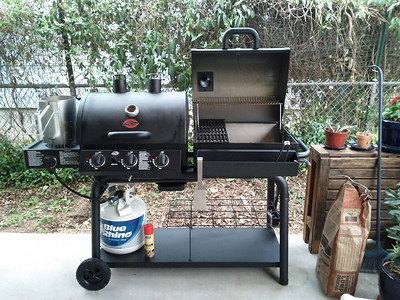
Butane, a hydrocarbon gas with the chemical formula C4H10, is an organic compound that can be highly flammable and explosive under certain conditions. However, an explosion is not caused by pressure alone. A butane explosion typically occurs when three critical factors come together: the presence of butane gas, the right concentration of gas mixed with air or oxygen, and an ignition source.
Butane is commonly used as fuel in lighters, portable stoves, and heating appliances. It is often stored under pressure in containers to maintain its liquid state. This allows for easier transport and storage, as the liquid form occupies a much smaller volume compared to the gaseous form.
A butane explosion can occur if the container storing the butane is compromised, such as if it is punctured, damaged, or improperly sealed. When this happens, the liquid butane can vaporize and rapidly expand, leading to a sudden release of gas. If the released gas mixes with air or oxygen at the right concentration, it forms a highly flammable mixture. The flammable range of butane in air is approximately 1.8% to 8.4% by volume. If this mixture encounters an ignition source, such as a spark, flame, or static electricity, it can ignite, resulting in an explosion.
To minimize the risk of butane explosions, it is crucial to handle and store butane and other flammable gases carefully and responsibly. This includes using properly designed and maintained containers, ensuring that all valves, seals, and connections are secure, and following appropriate safety guidelines.
In addition, it is essential to store butane containers away from heat sources and potential ignition sources, such as open flames, sparks, or electrical equipment. Adequate ventilation should be provided in areas where butane is stored or used to prevent the buildup of dangerous gas concentrations. Furthermore, always adhere to local regulations and guidelines regarding the storage, handling, and use of flammable gases like butane.
Here’s an article about Is Butane Like Gasoline?
Butane May Explode If Heated
Butane has the potential to explode when heated. The reason for this is that heating a butane container can cause the pressure inside to increase, which in turn can lead to a rupture or failure of the container itself.
When a container fails, the liquid butane inside vaporizes and rapidly expands as it is released into the surrounding environment. If this released gas mixes with air in the right concentration, which is approximately 1.8% to 8.4% by volume, it forms a highly flammable mixture. If an ignition source such as a spark, flame, or static electricity comes into contact with this flammable mixture, the result can be a sudden and violent explosion.
To prevent butane explosions due to excessive heat, it is essential to follow proper safety guidelines when handling and using butane. This includes storing butane containers away from direct sunlight and heat sources such as radiators, heaters, or open flames. Additionally, proper ventilation should be provided in areas where butane is stored or used to prevent the buildup of dangerous gas concentrations.
Regularly inspecting and maintaining butane containers and their associated equipment, such as valves, seals, and connections, is also crucial in ensuring their integrity and minimizing the risk of container failure due to excessive pressure caused by heat.
Furthermore, always adhere to local regulations and guidelines regarding the storage, handling, and use of flammable gases like butane. By taking these precautions and following safety best practices, you can help to reduce the risk of butane explosions and the associated dangers posed by excessive heat.
Here is an article about Is It Safe to Store Butane Canister in Hot Car?
How Much Pressure is a Butane Can Under?
The pressure inside a butane can or container depends on the temperature and the design specifications of the container. Typically, butane is stored as a liquid under pressure, and the vapor pressure increases as the temperature rises.
At room temperature (around 20-25°C or 68-77°F), the vapor pressure of butane is approximately 2 to 2.5 bar (29 to 36 psi). However, this pressure can increase significantly with higher temperatures. For instance, at 50°C (122°F), the vapor pressure of butane can be around 5 bar (72 psi).
It is important to note that these values are approximate and can vary depending on factors such as the purity of the butane and the specific container design. Commercial butane containers, like those used in lighters or portable stoves, are designed to withstand these pressures and provide a safe means of storing and using the fuel. However, it is still essential to handle and store butane containers properly to minimize the risk of accidents or explosions.
Conclusion
Butane is a flammable hydrocarbon gas that is widely used in a variety of applications, such as lighters, portable stoves, and heating appliances. To facilitate storage and transportation, butane is typically stored as a liquid under pressure in specially designed containers. The pressure inside these containers depends on the temperature and the container’s design. At room temperature, the vapor pressure of butane is roughly 2 to 2.5 bar (29 to 36 psi), and this pressure can increase as temperatures rise.
It is of utmost importance to follow proper handling, storage, and safety guidelines when dealing with butane in order to minimize the risk of accidents or explosions. This includes ensuring that containers are well-maintained and kept away from heat sources, following local regulations and guidelines, and providing adequate ventilation in areas where butane is stored or used. By adhering to these precautions and best practices, the potential dangers associated with butane can be significantly reduced, allowing for its safe and efficient use in various applications.

Mike is an experienced propane technician with over 15 years of professional experience in the field. He has dedicated his career to helping customers with their propane needs, from installation to maintenance and repair. Together with Jeremy, he co-founded this website to provide useful information and guidance to customers seeking reliable propane services.



